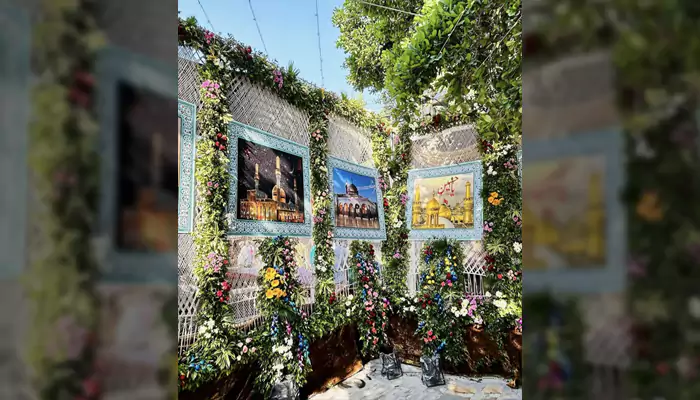Delhi's Record-breaking Warm Nights: Reasons, Health Concerns & Survival Guides
- Admin
- 1 year ago
- 7 minutes read

Delhi recorded its highest minimum temperature in four decades!
Usually, during hot summer months, temperature decreases after a scorching heat in the daytime. Unfortunately, that's not the case in this year! The temperature in Delhi continues to suffer people even during their resting time!
With rising concerns regarding heatwave, we will discuss about reasons behind Delhi's record-breaking temperature, heath consequences and survival tips.
Why Night in Delhi is So Hot?
On June 18, Delhi recorded a sweltering 35.2 degree Celsius. Along with hot daytime, warm nights are currently the biggest concern for Delhites. In the first three weeks of June 2024, there were seven consecutive warm nights.
According to IMD, “a warm night is one in which the night’s minimum temperature is above normal by a difference of 4.5 to 6.4 degree Celsius. A severe warm night is observed when the departure from normal is more than 6.4 degree Celsius. The precondition for both is that the temperature during the day must be 40 degree Celsius or more.”
Urban Heat Island: A recent CSE study blames on urban heat island effect, where develped regions trap heat, reduce green cover and further cause congestion and more heat absorption. According to National Geographic Society: “An urban heat island, or UHI, is a metropolitan area that's a lot warmer than the rural areas surrounding it. Heat is created by energy from all the people, cars, buses, and trains in big cities like New York, Paris, and London. Urban heat islands are created in areas like these: places that have lots of activity and lots of people.” These develped areas emit more green house gases too. Combined effects of these two factors are making Delhi much warmer, especially at nighttime.
Rising Humidity: The feeling of heatwave often gets enhanced by humidity. If the humidity is higher, body sweat doesn't evaporate fast. Thus, it feels hotter. Meanwhile, the CSE study noted a “5-10% rise in average summer humidity in most metros over the last decade.” This has caused people suffer more in Delhi.
Health Concerns:
Generally, the temperature falls in the early hours of the day, between 3 am and 5 am, according to Indian Meteorological Department (IMD). However, it's not happening in Delhi alongwith lack of rainfall. This leads to rising cases of heatstroke. Summer 2024 has reported over 40,000 heatstroke cases, among which more than 100 people died in northern states in India.
Night is the time when human body gets some rest. Unfortunately, the indoor temperature is becoming hotter than outdoor in nighttime, causing discomfort and sleep deprivation.
Dr Dileep Mavalankar, former director at IIPH Gandhinagar said: “Apart from hot nights, humidity also has a huge impact on mortality. The mortality is likely to be more in areas with high humidity combined with high temperatures because of high heat index.”
Survival Strategies:
Abhiyant Tiwari, lead climate resilience and health consultant at NRDC India suggested: “Adaptation solutions are needed immediately for the most vulnerable so they have to be targeted and cooling solutions have to be provided to housing economically weaker sections. And by cooling we do not mean air conditioning. We need more passive cooling measures in these houses, better ventilation etc.”
Dehydration is the biggest concern during extreme
Delhi recorded its highest minimum temperature in four decades!
Usually, during hot summer months, temperature decreases after a scorching heat in the daytime. Unfortunately, that's not the case in this year! The temperature in Delhi continues to suffer people even during their resting time!
With rising concerns regarding heatwave, we will discuss about reasons behind Delhi's record-breaking temperature, heath consequences and survival tips.
Why Night in Delhi is So Hot?
On June 18, Delhi recorded a sweltering 35.2 degree Celsius. Along with hot daytime, warm nights are currently the biggest concern for Delhites. In the first three weeks of June 2024, there were seven consecutive warm nights.
According to IMD, “a warm night is one in which the night’s minimum temperature is above normal by a difference of 4.5 to 6.4 degree Celsius. A severe warm night is observed when the departure from normal is more than 6.4 degree Celsius. The precondition for both is that the temperature during the day must be 40 degree Celsius or more.”
Urban Heat Island: A recent CSE study blames on urban heat island effect, where develped regions trap heat, reduce green cover and further cause congestion and more heat absorption. According to National Geographic Society: “An urban heat island, or UHI, is a metropolitan area that's a lot warmer than the rural areas surrounding it. Heat is created by energy from all the people, cars, buses, and trains in big cities like New York, Paris, and London. Urban heat islands are created in areas like these: places that have lots of activity and lots of people.” These develped areas emit more green house gases too. Combined effects of these two factors are making Delhi much warmer, especially at nighttime.
Rising Humidity: The feeling of heatwave often gets enhanced by humidity. If the humidity is higher, body sweat doesn't evaporate fast. Thus, it feels hotter. Meanwhile, the CSE study noted a “5-10% rise in average summer humidity in most metros over the last decade.” This has caused people suffer more in Delhi.
Health Concerns:
Generally, the temperature falls in the early hours of the day, between 3 am and 5 am, according to Indian Meteorological Department (IMD). However, it's not happening in Delhi alongwith lack of rainfall. This leads to rising cases of heatstroke. Summer 2024 has reported over 40,000 heatstroke cases, among which more than 100 people died in northern states in India.
Night is the time when human body gets some rest. Unfortunately, the indoor temperature is becoming hotter than outdoor in nighttime, causing discomfort and sleep deprivation.
Dr Dileep Mavalankar, former director at IIPH Gandhinagar said: “Apart from hot nights, humidity also has a huge impact on mortality. The mortality is likely to be more in areas with high humidity combined with high temperatures because of high heat index.”
Survival Strategies:
Abhiyant Tiwari, lead climate resilience and health consultant at NRDC India suggested: “Adaptation solutions are needed immediately for the most vulnerable so they have to be targeted and cooling solutions have to be provided to housing economically weaker sections. And by cooling we do not mean air conditioning. We need more passive cooling measures in these houses, better ventilation etc.”
Dehydration is the biggest concern during extreme heatwave. Thus, drinking at least 4-5 litres of water is mandatory for adults while it should be 2-3 litres for kids in a day. If a patient is suffering from high fever, use cool packs to reduce the temperature. Consume fruits with high water quantity like cucumber and watermelon. Always take cool showers and consume light meals to remain healthy in this summer.
In case of emergency, prefer taking suggestion from the experts and early hospitalization of the patient.
heatwave. Thus, drinking at least 4-5 litres of water is mandatory for adults while it should be 2-3 litres for kids in a day. If a patient is suffering from high fever, use cool packs to reduce the temperature. Consume fruits with high water quantity like cucumber and watermelon. Always take cool showers and consume light meals to remain healthy in this summer.
In case of emergency, prefer taking suggestion from the experts and early hospitalization of the patient.












